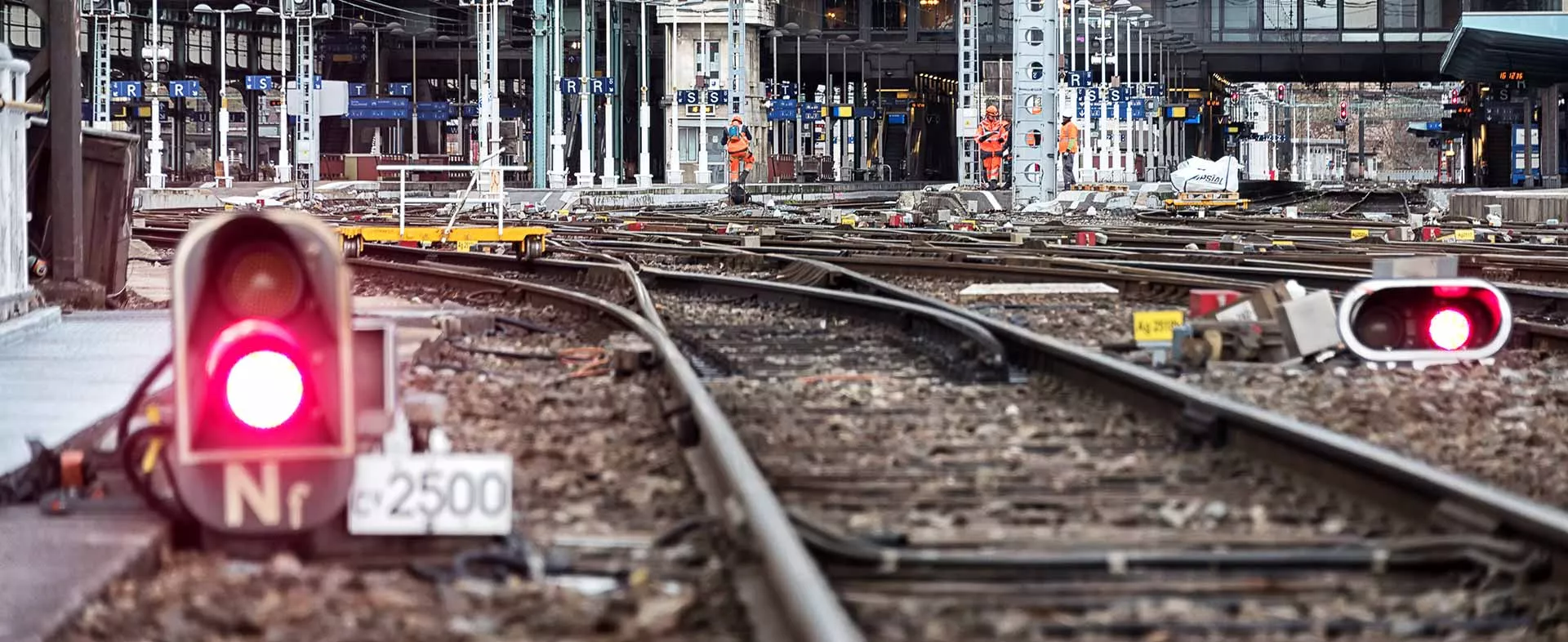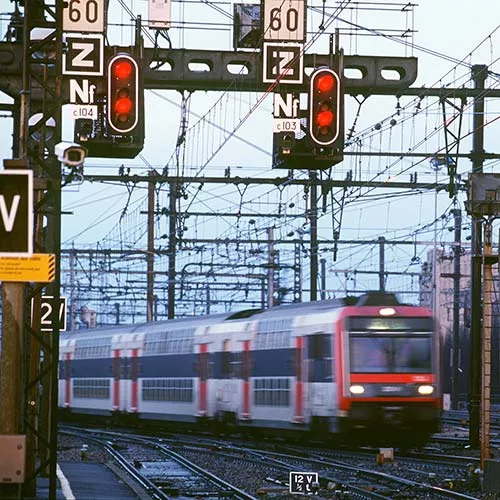
How does rail signalling work?
“Rail signalling” refers to all the technical equipment that ensures trains run smoothly and safely. Signalling is managed from traffic control units across the rail network. Learn about all the different rail signalling systems and how we respond if they fail.
There are two types of signalling systems:

Trackside signalling
These “lateral signals” are used on conventional lines—not high-speed TGV lines—and installed on posts next to the tracks. Like the highway code, they use a three-color traffic light system:
- Green indicates that the section ahead is clear, and the train can proceed safely.
- Amber indicates that the next signal could be red. For safety reasons, the driver must slow down to be able to stop at the next signal, if necessary.
- Red, also known as a “stop signal” or “danger signal”, tells the driver to stop.
Cab signalling
Trackside signal lights are not visible on a TGV travelling at speeds of over 300 km/h. Instead these high-speed trains rely on cab signalling. This displays instructions directly on the driver’s dashboard, informing them whether to travel at full or reduced speed.
Track-to-train transmission
If necessary, track-to-train transmission—also known as TVM from the French Transmission Voie-Machine—can order the driver to stop the train. For example, if a TGV hits an animal that has wandered onto the track, the driver must stop the train to conduct safety checks. To avoid collision risks, TGVs running behind the stopped train are instructed to reduce speeds and stop their trains.
Here’s how it works.
Signal failures
What happens if they malfunction?
Despite the supervision of trackside signal operators and the best efforts of our maintenance centers, rail signalling, like any technical equipment, can still experience failures. Track-to-train (TVM) transmission can fail, and signal lights on a trackside post malfunction. If trackside lateral signalling fails, maintenance crews quickly head out to repair it. Traffic is immediately suspended to keep you safe.
How is a malfunction detected?
Several people can report a signal failure:
- train drivers, for example, might notice lights blinking abnormally or stuck on one colour.
- signalers might detect an issue when the optical control panel for a given sector indicates an anomaly.
- track and equipment maintenance staff might spot problems, such as a damaged electric power supply cable or malfunctioning signalling lights on a post.
Onboard TGVs, a warning flashes up on the driver’s dashboard to indicate a malfunction.
Wearing two hats: driver and repairer
Share the article